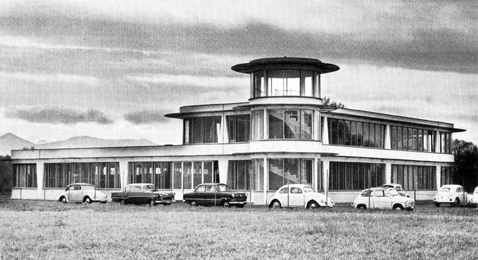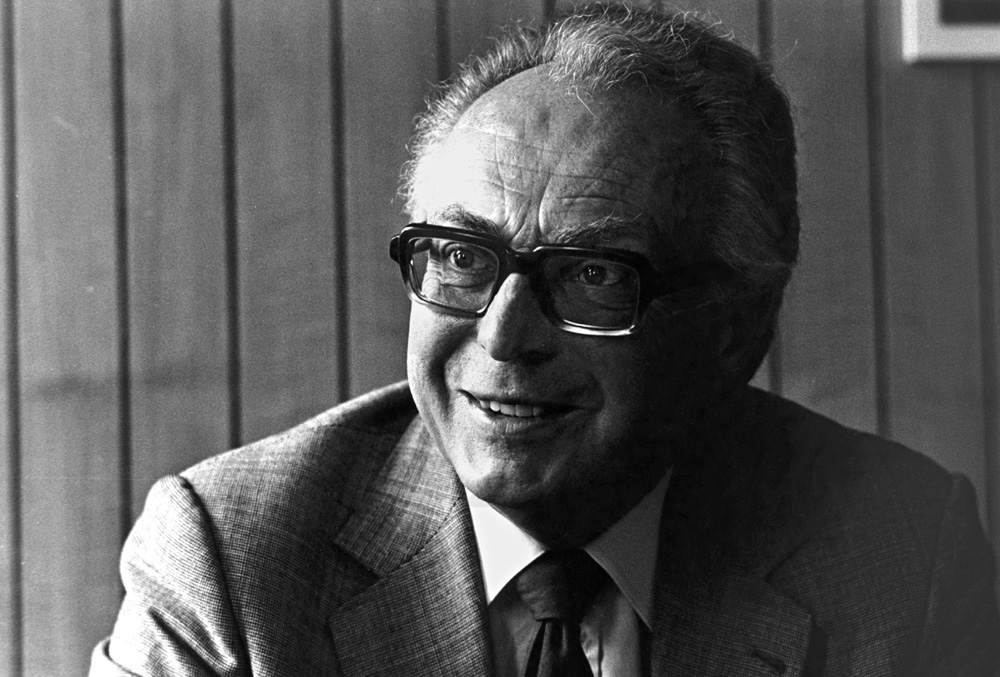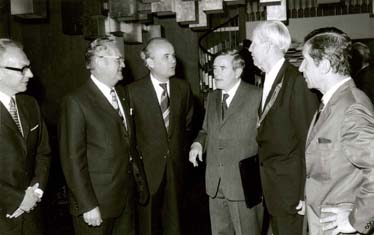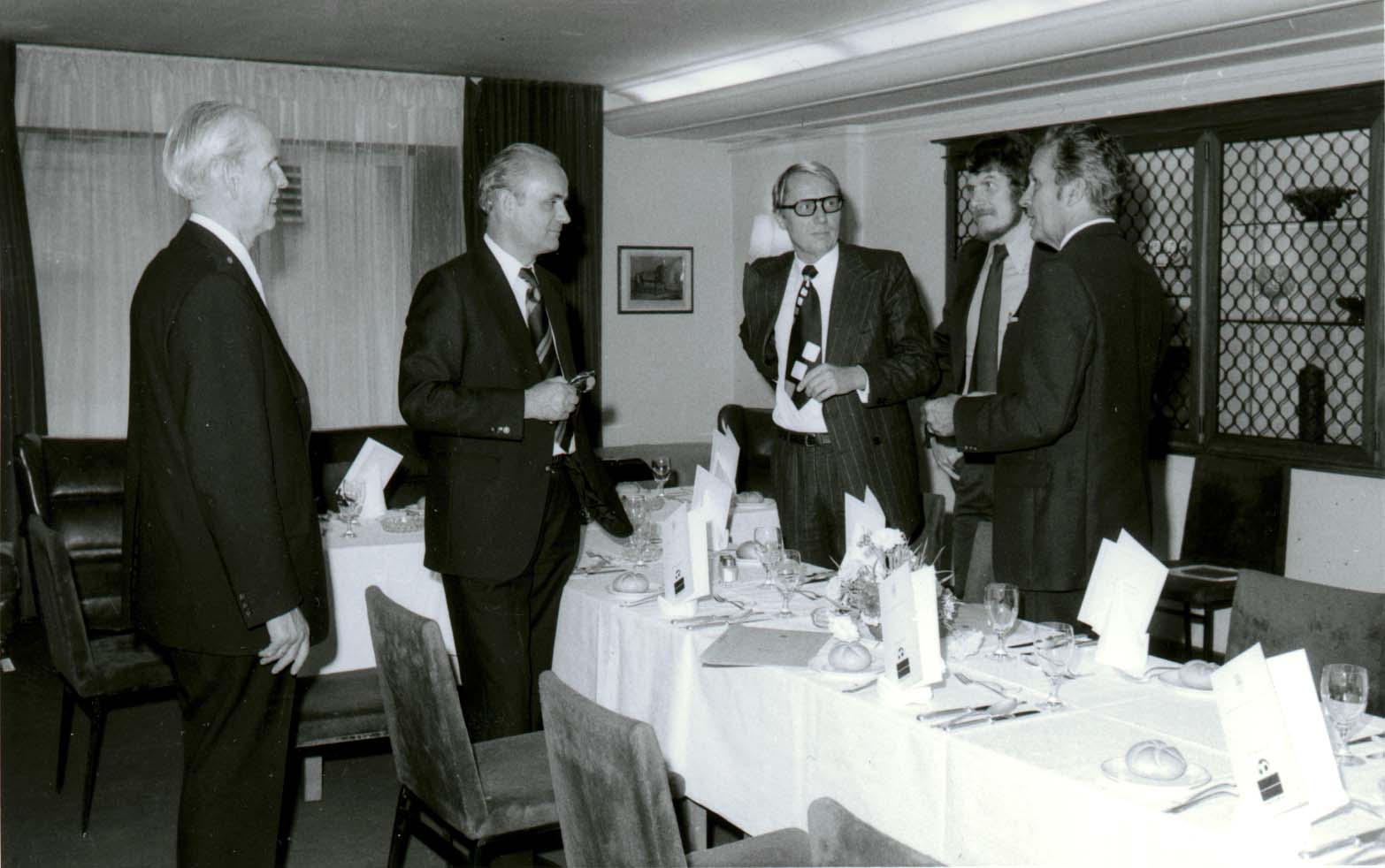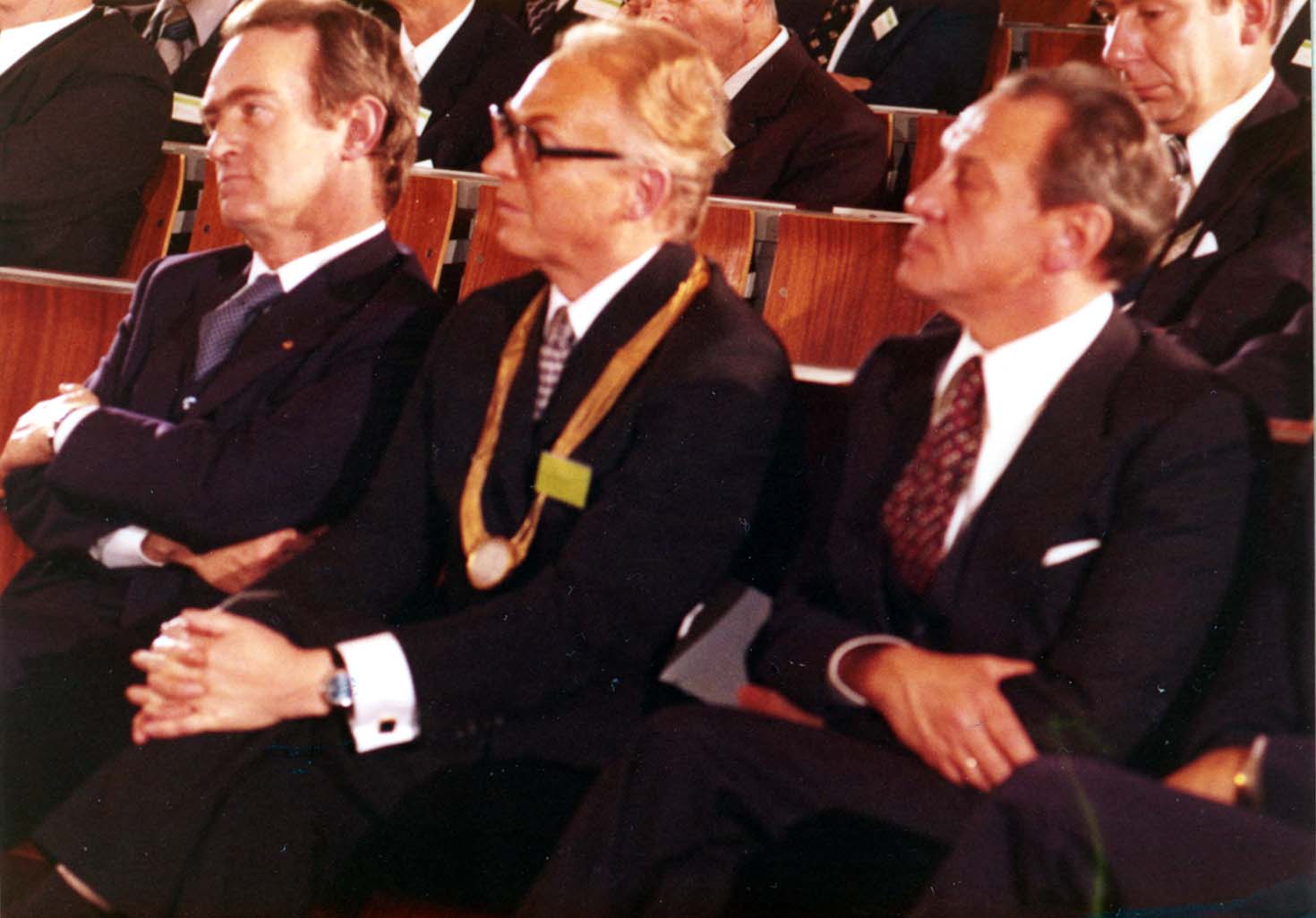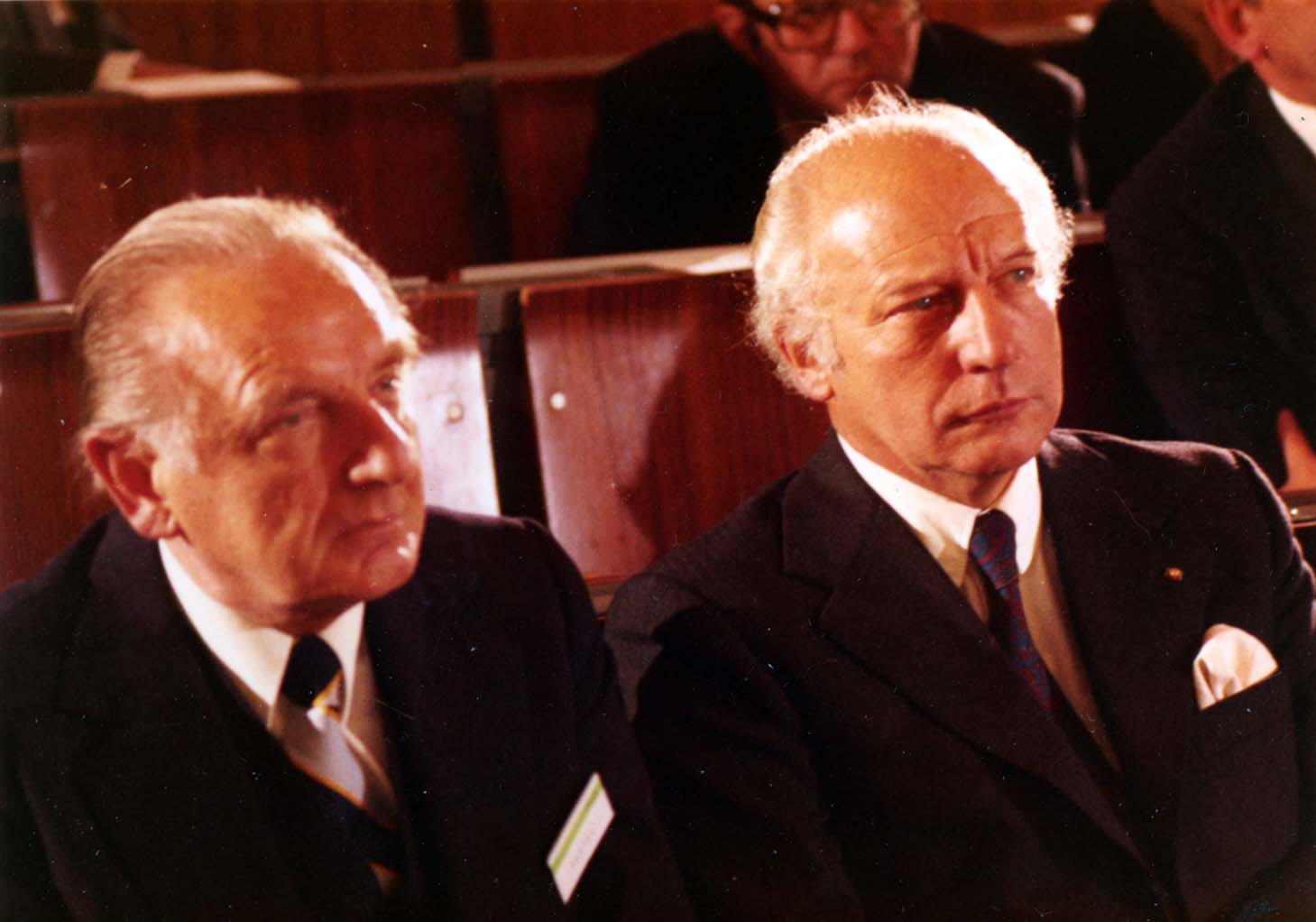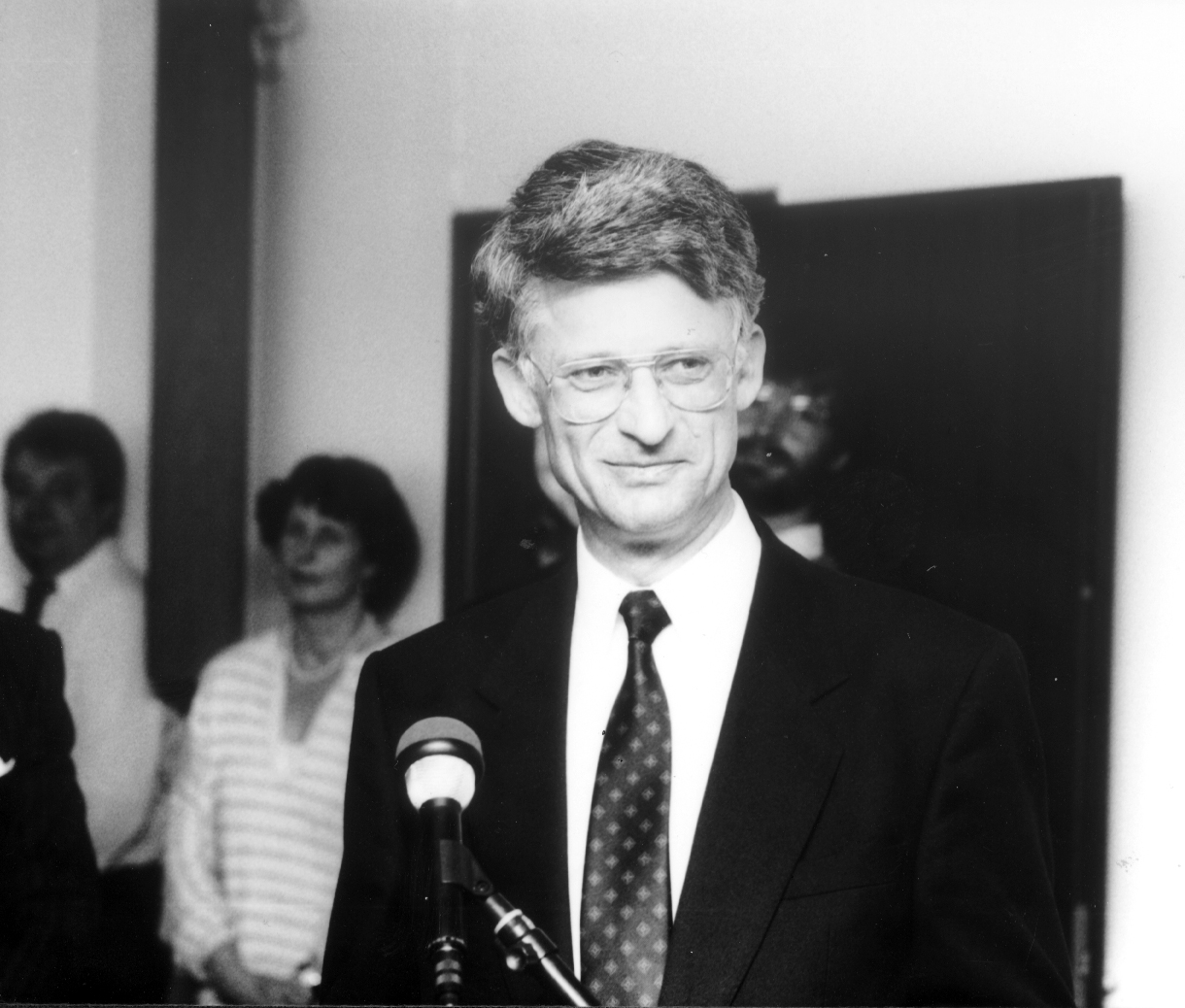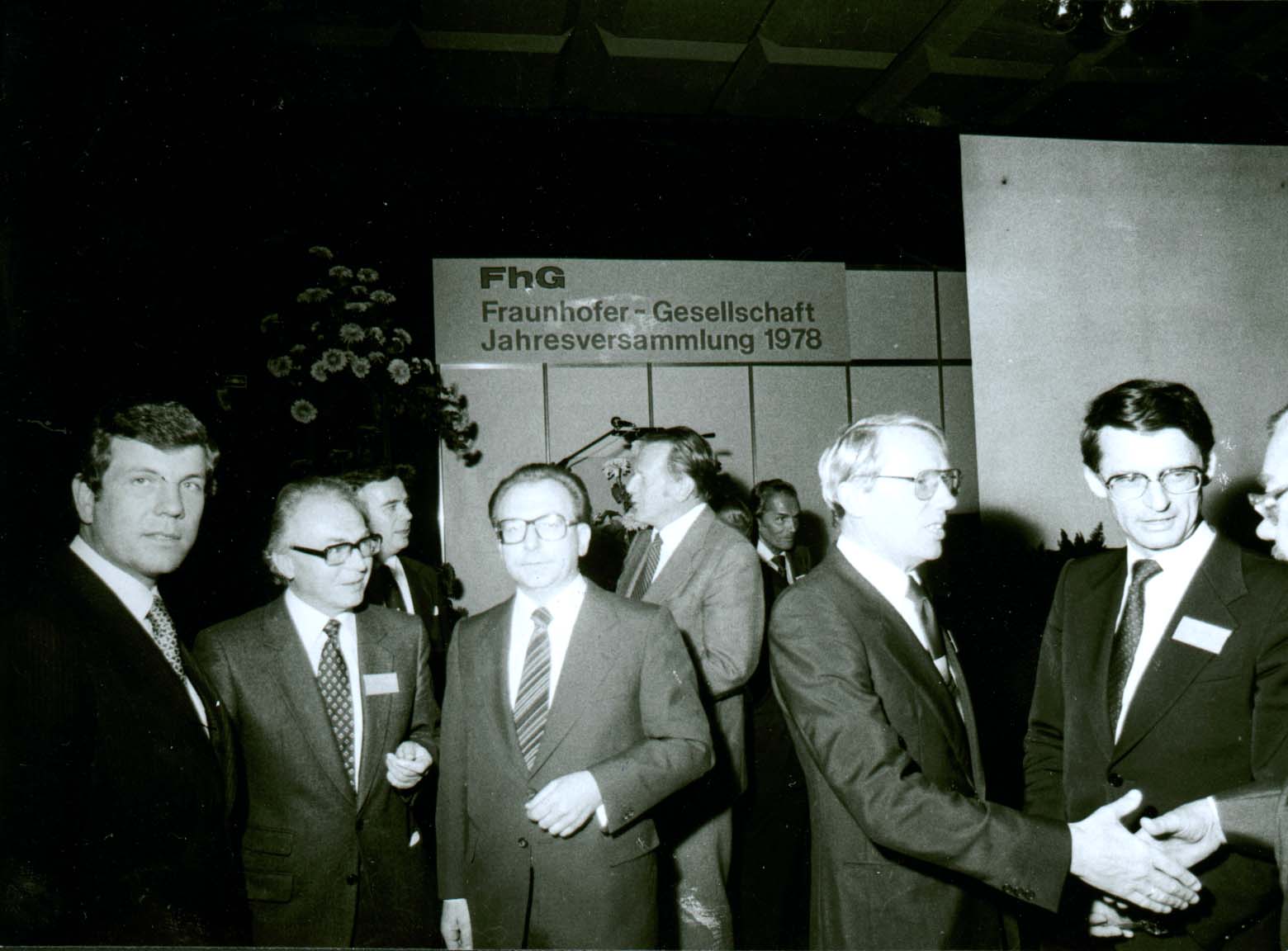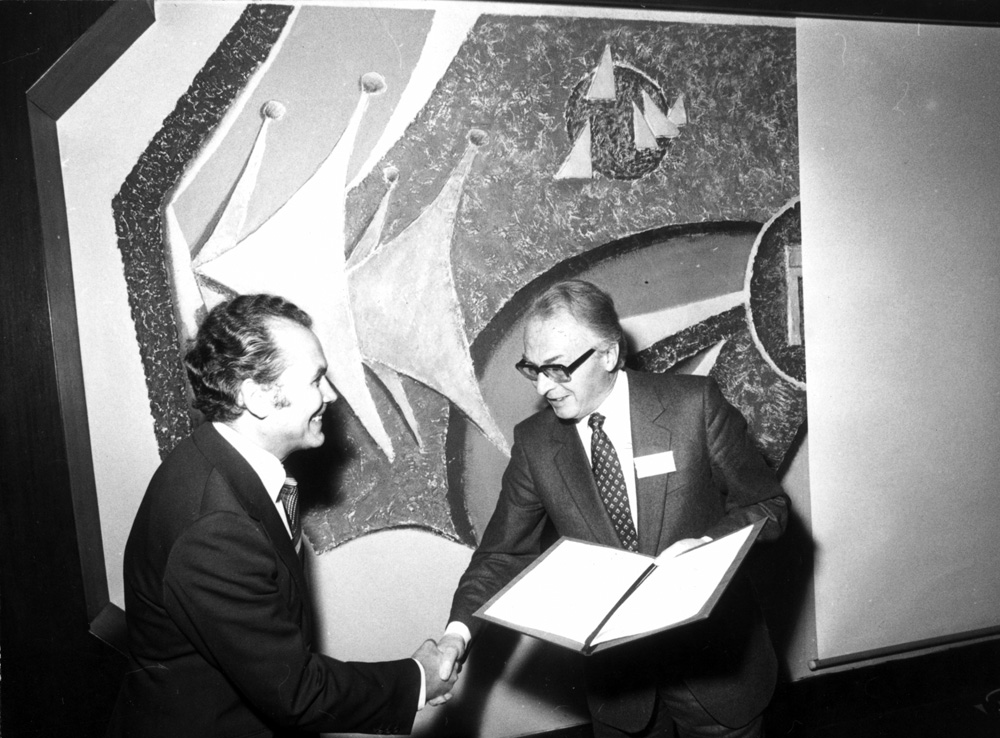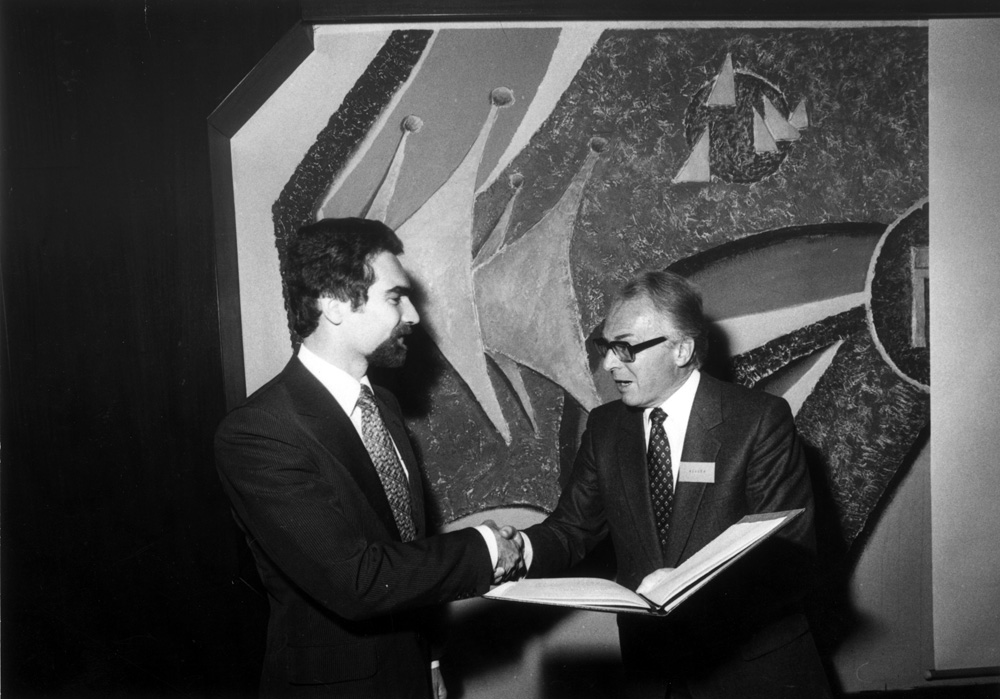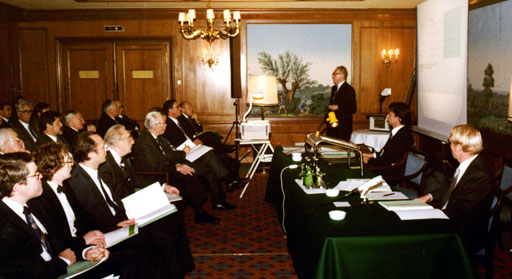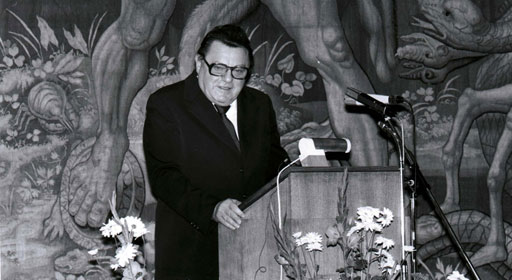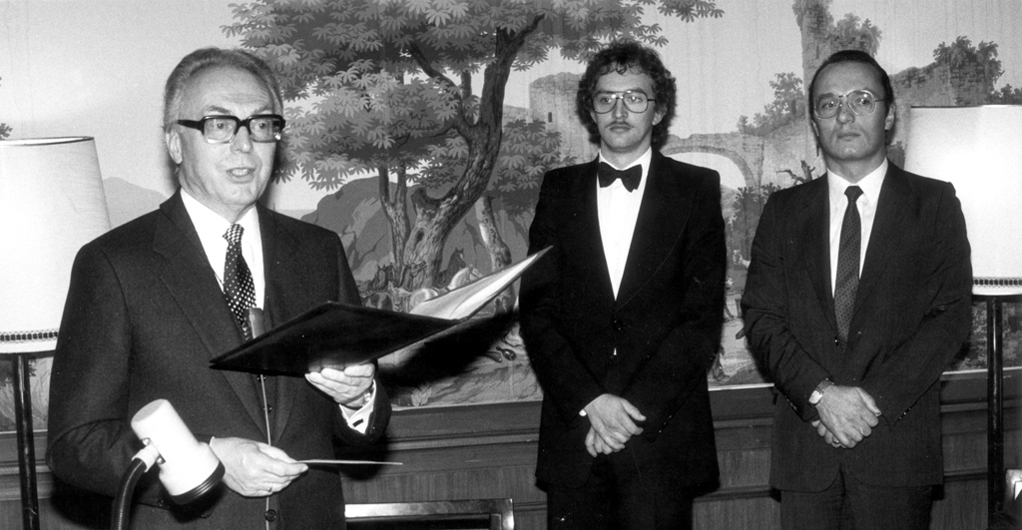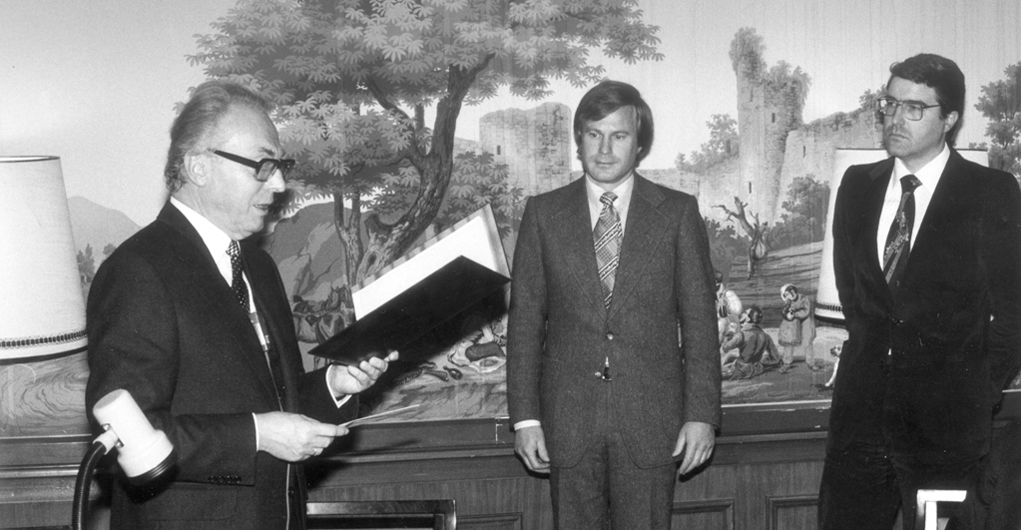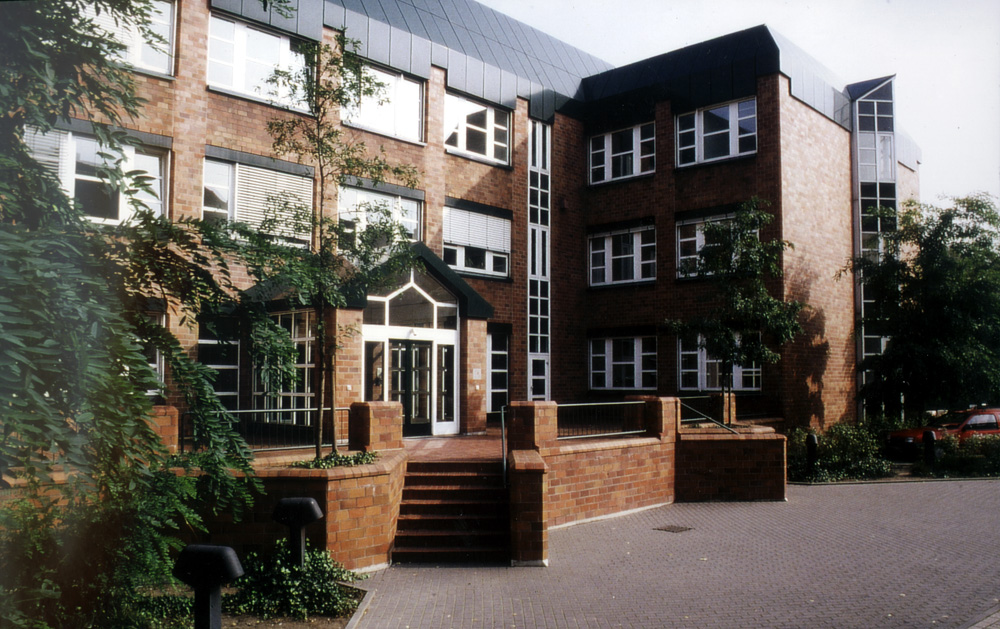Inauguration "Joseph von Fraunhofer Prize"
The Fraunhofer Prize is inaugurated. It is awarded each year to members of staff of the Fraunhofer-Gesellschaft - for outstanding scientific work in the application-related solution of technical and scientific problems.
The first winners of the Joseph von Fraunhofer Prize
Dr. Günther Baur and Waldemar Greubel
from Fraunhofer Institute for Applied Solid State Physics IAF for the development of a fluorescence activated display
Ulrich Lübbert
from Fraunhofer Institute for Information and Data Processing IITB for a method of automation of root welding
"We were able to combine fluorescent plates as light collectors with liquid crystal cells in such a way that large-format, high-intensity displays could be manufactured. The technique was suitable for large clocks and displays. To get the first Fraunhofer Award meant an honor and I was very happy. The combination of the fluorescent light collectors with solar cells later contributed to founding the Fraunhofer Institute for Solar Energy Systems ISE from our institute."
Dr. Günter Baur, Fraunhofer IAF, 1978 first winner of the Joseph von Fraunhofer Prize.
